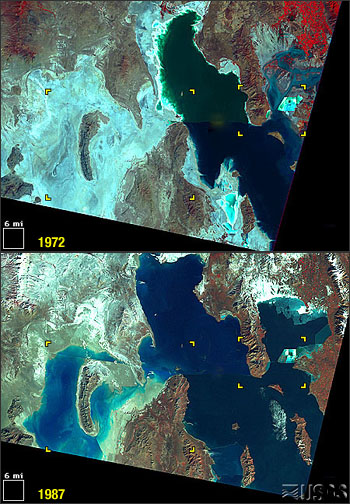Location: Great Salt Lake, Utah
Source: USGS Earthshots

The Great Salt Lake is a terminal lake, with no outlet rivers running to the ocean. This means the lake responds dramatically to changes in inflow. Rainy weather beginning in 1982 brought the lake to its highest levels in recorded history, peaking in June 1986 and March-April 1987.
The Great Salt Lake is shallow for its size– about 70 miles long and 30 miles wide, but only about 40 feet deep. Because the lake basin is relatively flat, extra inflow to the lake makes it rise only slowly, but any rise means a large increase in area. These images show how highways, causeways, and parts of Salt Lake City were flooded or threatened in the 1980s, costing millions of dollars.

Landsat Insights: Wetland History in Your Hand
Practitioners managing the wellbeing of wetlands have a new tool at their disposal. The Wetland Insight Tool, developed by Geoscience Australia, provides a visual summary of 35+ years of wetland dynamics.


